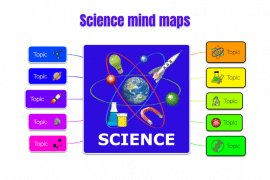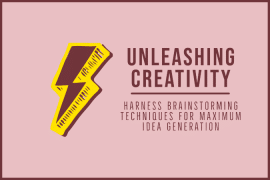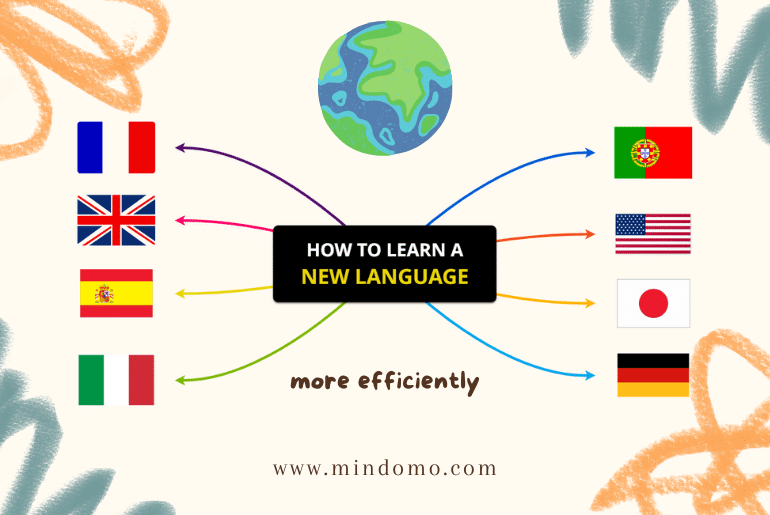
Learning a new language can be a daunting task, but it’s one that can open up a world of opportunities. Whether it’s for travel, work, or personal growth, there are many reasons to embark on the journey of language learning.
But where do you start?
How do you go from being a complete beginner to becoming fluent?
You could take online language classes. Or pay big money for language learning software. You could hire a language tutor or spend months at a language school. All of those things are perfectly legitimate ways to improve your language learning journey.
But you don’t have to invest thousands of dollars in language learning programs to learn a foreign language. A handful of YouTube videos or a podcast can get you a long way as a language learner.
And with the right additional tips, you can acquire your target language even more quickly.
In this article, we’ll explore how to learn a new language and provide you with five tips you need to know to become fluent. We’ll cover the basics of language learning and help you get on the path to becoming a confident speaker.
So whether you’re starting from scratch or looking to brush up on your skills, read on. You’ll discover the key strategies for mastering a foreign language and communicating with native speakers.
By incorporating these tips, you’ll make the most of whatever language learning path you take. And they’ll work whether you’re learning Spanish, Brazilian Portuguese, or any other second language.
What is visual learning? (And how can mind maps help?)
When learning a foreign language, visual learning can be a powerful tool to improve your comprehension and retention.
Visual aids like flashcards, diagrams, and charts can help you associate new words and concepts with images and make connections between them. Watching foreign language videos can also be a great way to expose yourself to the language in a natural context. This will help you pick up new vocabulary, grammar, and pronunciation more easily.
Similarly, creating an education mind map diagram can help you make connections between different aspects of the language you are learning. By using visual aids and techniques, you can make your foreign language learning experience more engaging and effective.
That’s why we’re going to include how you can implement each of the following tips with mind mapping software.
1. Study native speakers’ pronunciation very early on
One of the most crucial aspects of language learning is mastering the pronunciation of words. As a beginner, it’s essential to study pronunciation very early on, as it lays the foundation for effective communication.
The sooner you become comfortable with the sounds of the language, the better your listening comprehension will be. And the more easily you’ll be able to communicate with native speakers. Focusing on pronunciation early on will also help you avoid developing bad habits and incorrect pronunciation that can be difficult to unlearn later on.
Using mind maps to study pronunciation
Using mind mapping software like Mindomo can be an effective tool for studying pronunciation. Mind map diagrams allow you to organize information, making it easier to understand and memorize visually.
You can create a mind map that includes the sounds of the language, along with examples of words and phrases that use each sound.
For example, if you’re learning French, you could create a mind map that includes the different vowel sounds. So, you could create a mind map featuring ‘eu’ and ‘ou’ along with examples of words that use each sound. Each topic has attached the audio file of the pronunciation:
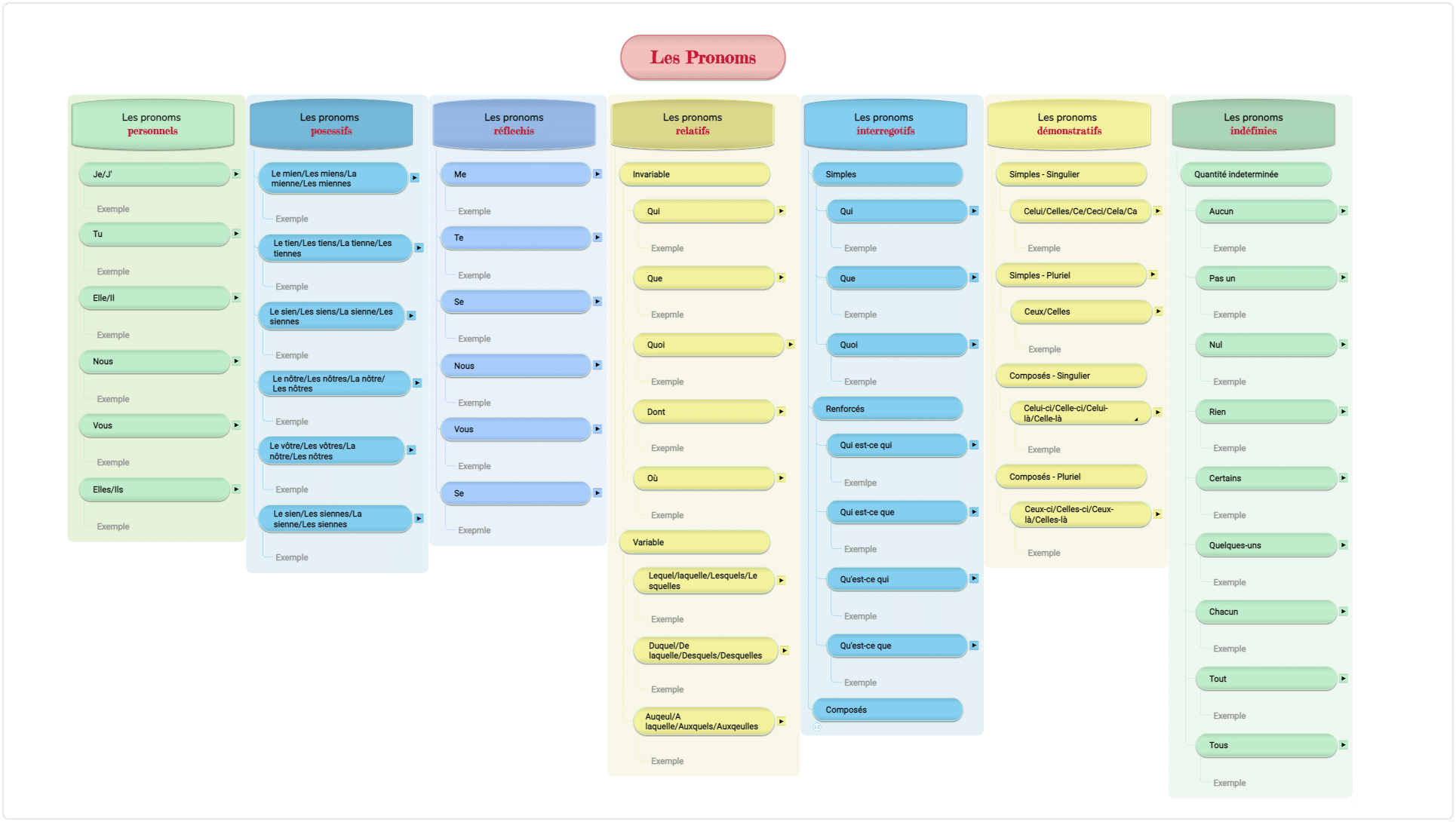
By creating a visual representation of the sounds and their corresponding words, you can quickly learn and remember the correct pronunciation. Additionally, you can use Mindomo to record and listen to yourself practicing the sounds, helping you to perfect your pronunciation over time.
2. Start using the foreign language all day, every day
To truly become fluent in a new language, you must immerse yourself in it. This means using the target language all day, every day, even if it feels uncomfortable or difficult at first.
The more you use your language skills, the more natural it will become. Eventually, you’ll start to think and speak in the target language without having to translate from your native tongue.
This can be challenging, but it’s one of the most effective ways to learn a new language quickly and efficiently.
Using mind maps to practice your target language all day
Using mind mapping software like Mindomo can be a helpful tool to support successful language learning.
You can create a mind map of vocabulary words and phrases that you frequently use in your everyday life. You consider adding common phrases like “good morning,” “thank you,” and “how are you?”
By incorporating these phrases into your daily interactions, you’ll start to use the new language more often. In the process, it will become more natural to you.
You can also create mind maps to help you practice grammar rules. Or common words. OR multiple meaning words. Or verb conjugation. Or any other aspects of the foreign language that you’re struggling with.
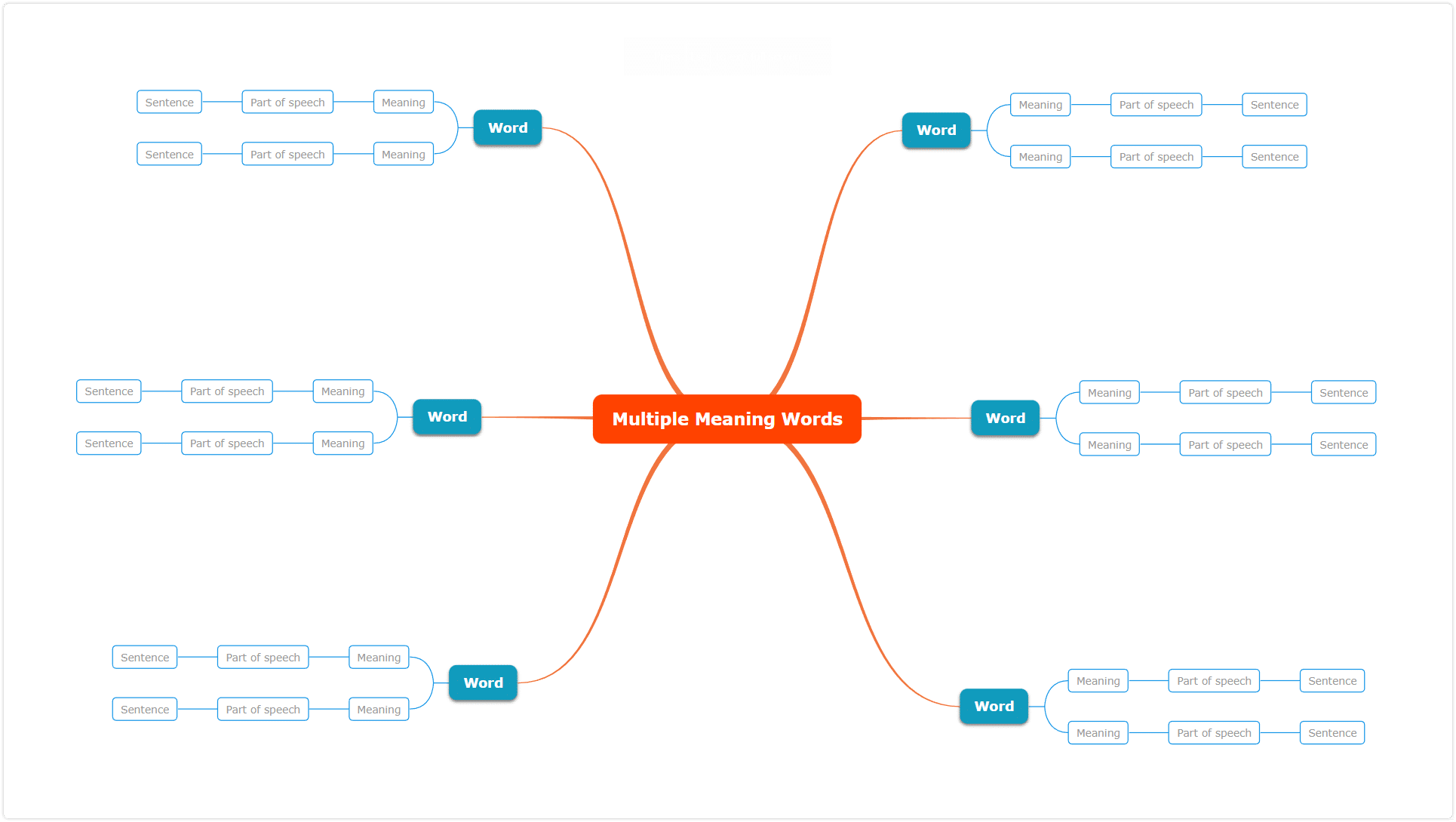
By organizing this information visually, you’ll be able to quickly review and practice the language throughout the day. You can even take advantage of the briefest moments of downtime.
3. Focus on comprehensible input
When learning a new language, it’s essential to focus on comprehensible input. This means exposing yourself to language that you can understand, even if it’s not perfect or complete.
By listening to and reading material that is just slightly above your level of comprehension, you’ll gradually expand your understanding. You’ll hear new words and discover their meaning from the context.
Eventually, you’ll also be able to understand more complex language structures. This is a key aspect of language learning. It allows you to gain exposure to real-life situations and interactions, which is critical for becoming a confident speaker.
Using mind maps to focus on comprehensible input
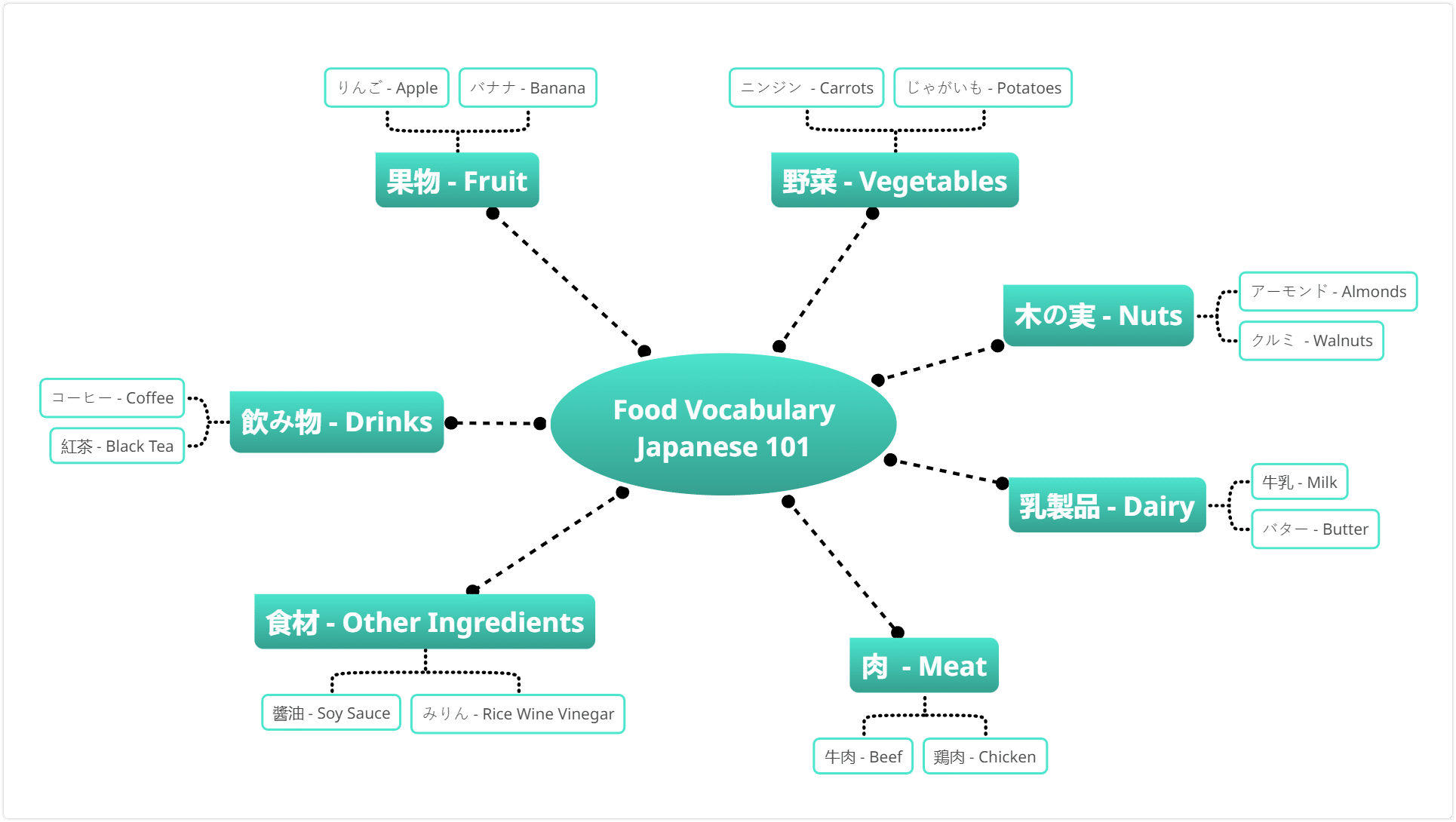
Using mind mapping software like Mindomo can be a useful tool for organizing and expanding your comprehensible input. See the above mind map example for students like you.
You can create a mind map of words and phrases that you understand well or with the rules. Then, you can add related words and concepts that you’re less familiar with. By making connections between familiar and unfamiliar words, you’ll start to see how language is used in context. And you’ll gradually expand your vocabulary and comprehension.
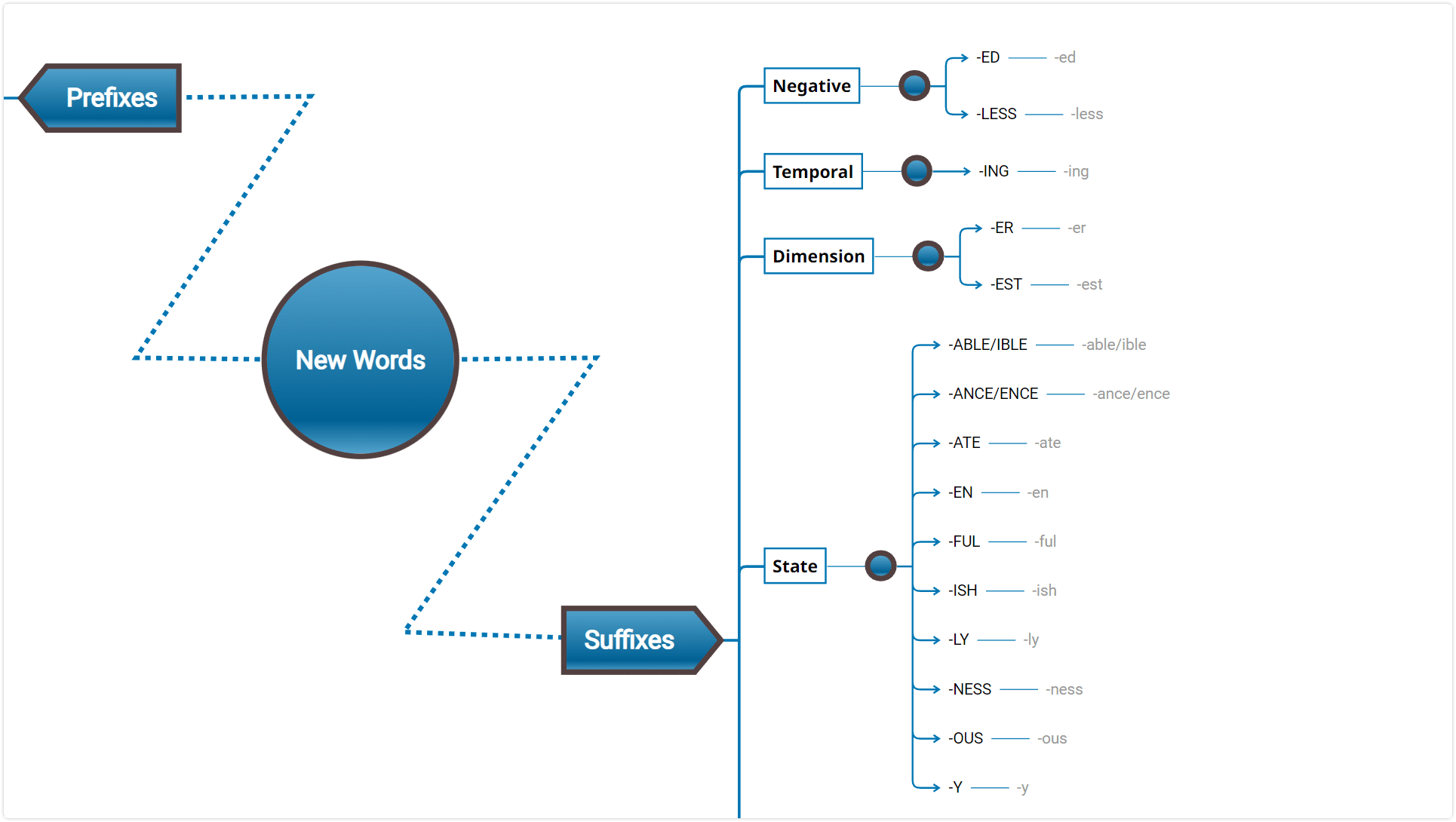
Additionally, you can create mind maps of short stories, news articles, or other written material that you can understand. Break down the material into smaller, more manageable pieces. Then, you’ll be able to focus on comprehension and gradually build your language skills.
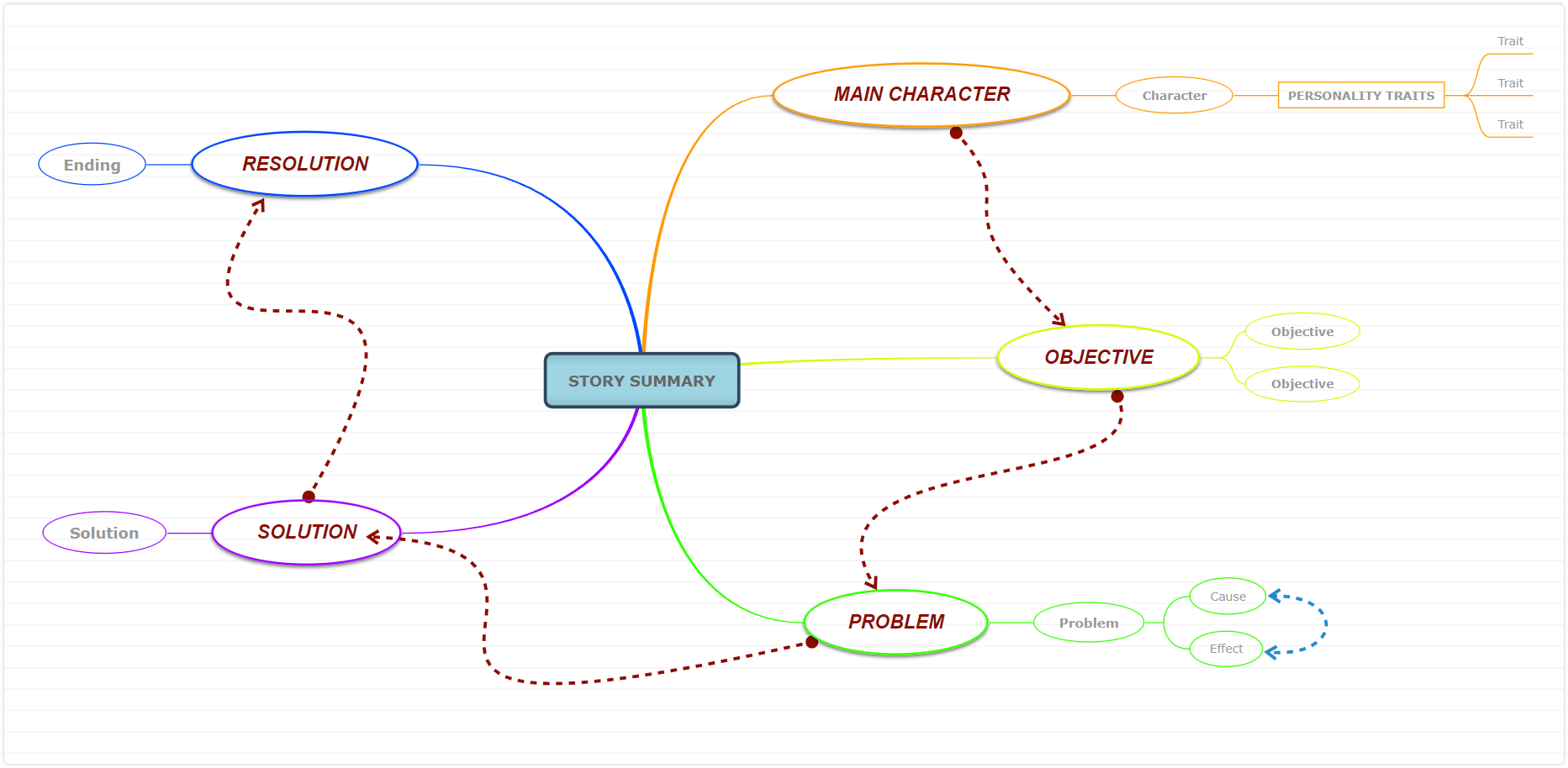
Mind mapping can also help you identify patterns in the language, making it easier to understand similar structures in the future. By incorporating these strategies, you’ll be able to focus on comprehensible input and accelerate your language learning progress.
4. Set language learning goals
Setting language learning goals is an essential step in the language learning process. Without clear goals, it can be challenging to stay motivated and focused on making progress.
By using a correct goal setting technique and setting achievable and measurable goals, you’ll be able to track your progress, celebrate your successes, and adjust your approach. Setting goals can also help you prioritize your time. Then, you can focus on the most important aspects of language learning, such as grammar, vocabulary, or conversation skills.
Using mind maps to set language learning goals
Using mind mapping software like Mindomo can be an effective tool for setting and tracking language learning goals.
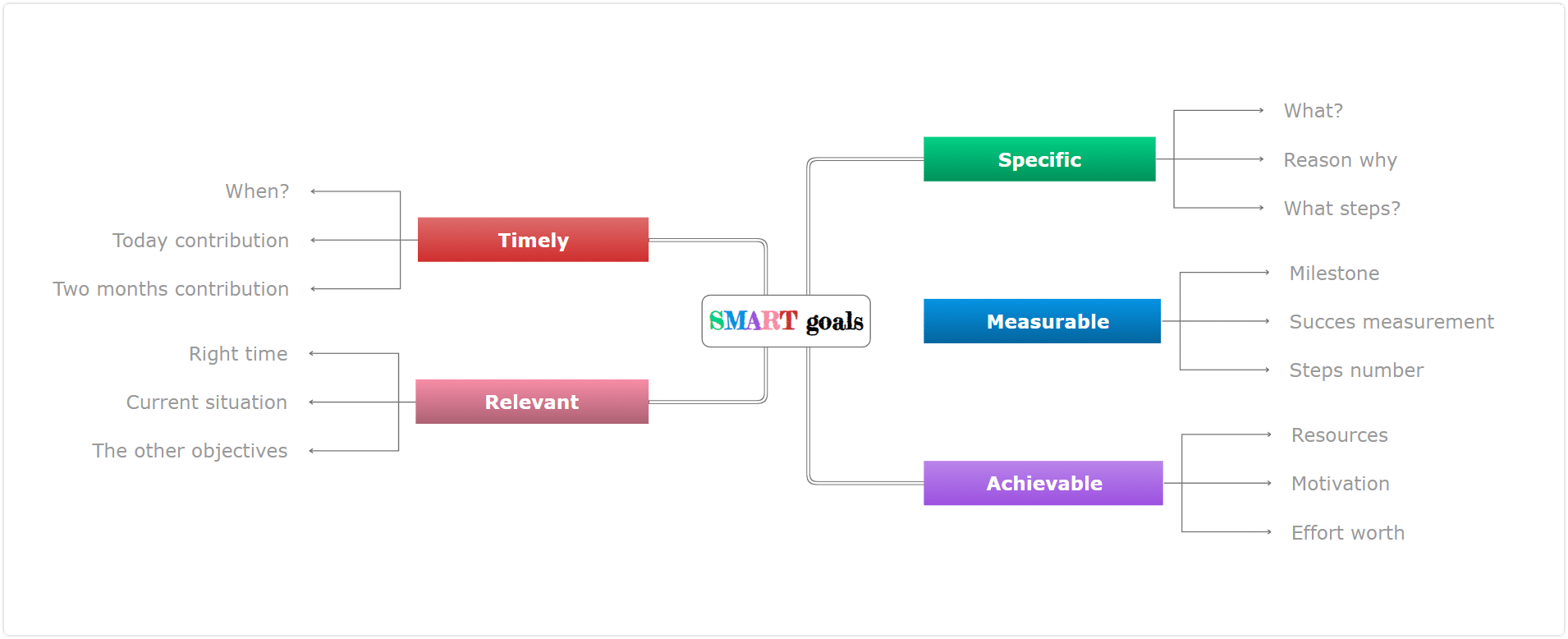
You can create a mind map that outlines your long-term language learning objectives. You may want to become conversational in six months or achieve fluency in a year. From there, you can break down these objectives into smaller, more manageable goals. Maybe you want to learn a certain number of vocabulary words per week. Or practice grammar exercises for a specific amount of time each day.
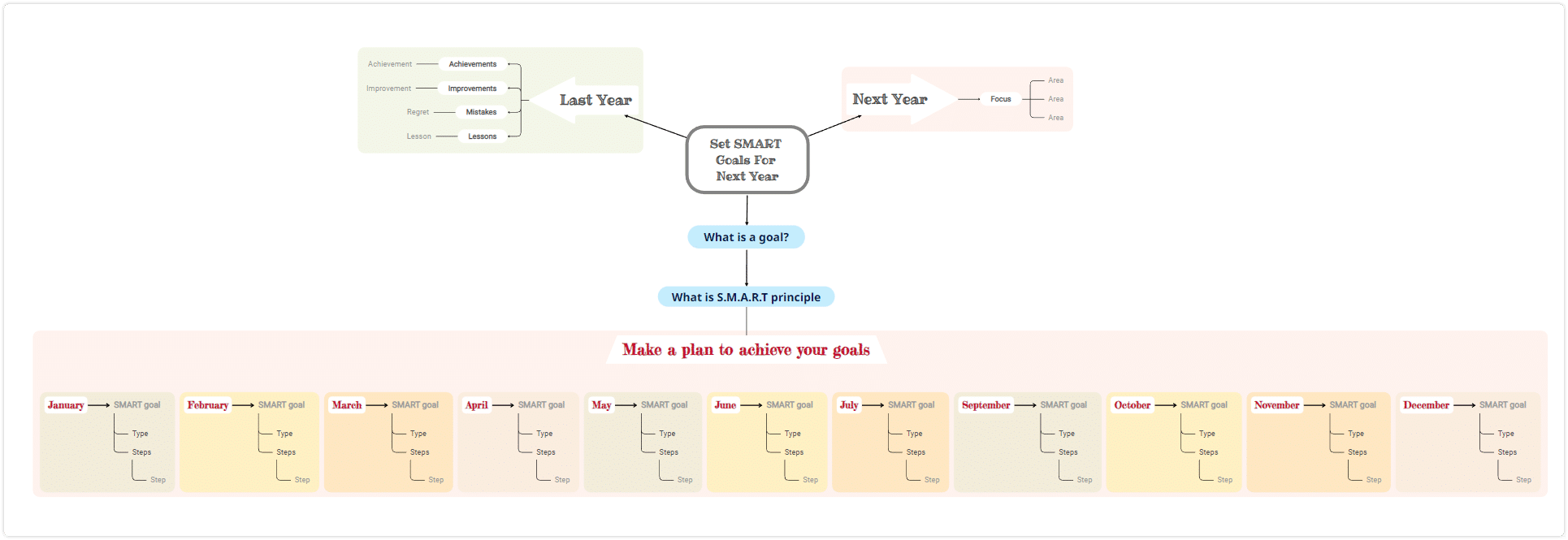
By visualizing your goals in a mind map, you’ll be able to see how they fit together and prioritize your efforts accordingly. You can also use Mindomo to track your progress toward each goal. This will make it easy to see how much you’ve accomplished. And it will empower you to identify areas where you need to focus more attention.
With these tools, you’ll be able to set and achieve meaningful foreign language learning goals. So you can become a more confident and proficient speaker quicker than ever.
5. Start speaking early
One of the most critical tips for language learners is to speak at the early stages of your journey.
It can be intimidating to try out a new language, but it’s essential to practice your conversational skills as soon as possible. By speaking the language, you’ll start to develop your pronunciation, grammar, and vocabulary in a real-life context.
You’ll also get feedback on your mistakes and learn how to communicate more effectively with native speakers. Starting to speak the language early on will build confidence and make it easier to stay motivated as you progress.
Using mind maps to speak early and often
You can use mind mapping software like Mindomo to create your very own language learning program. Craft a learning schedule. Develop checklists that you can use for practicing other languages each day. Plan group classes.
The best way to start speaking is to make appointments to do so. And mind mapping software can help you organize your language acquisition plans.
You can use a checklist to plan every activity:
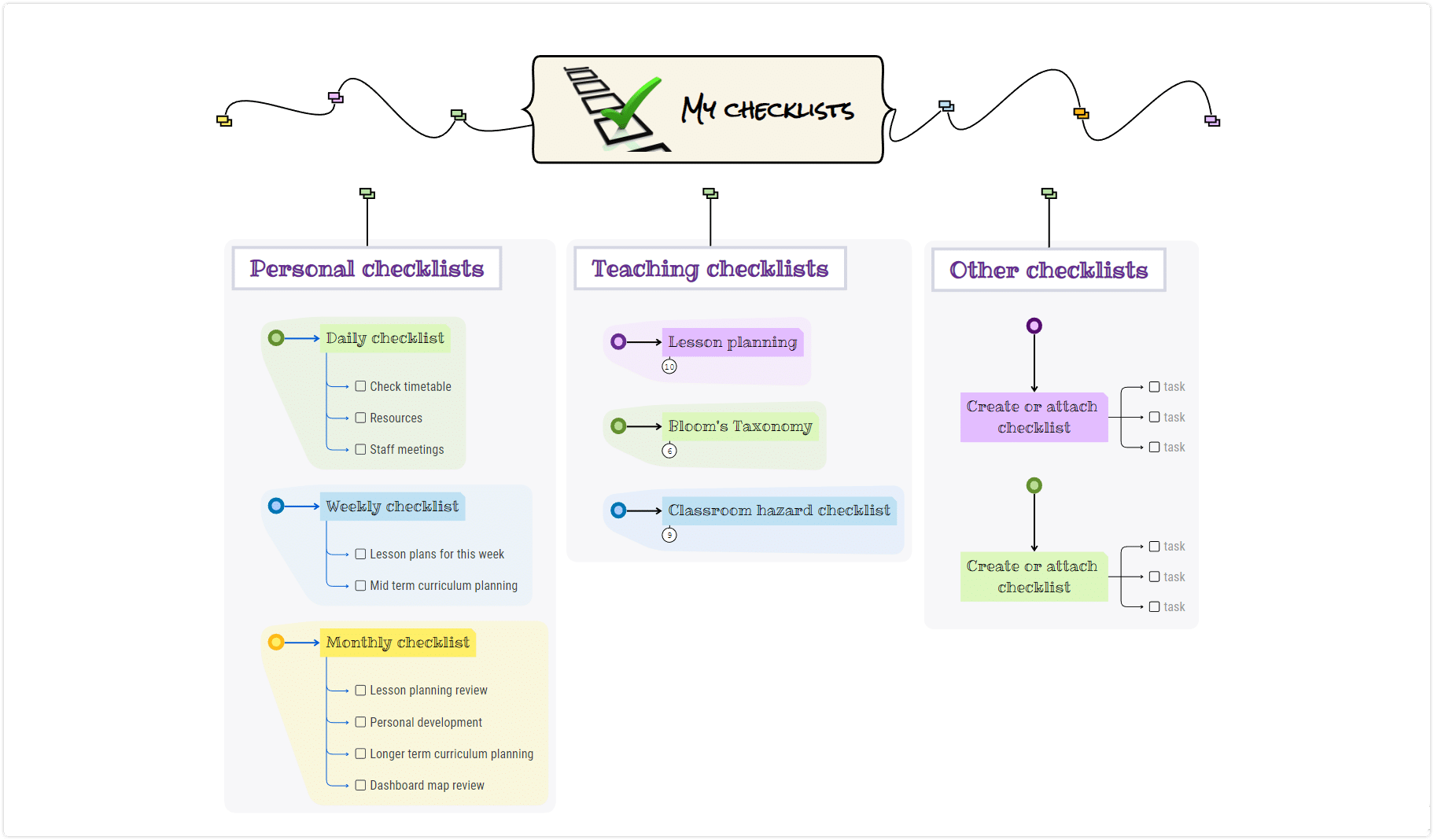
6. Learn the “right” words
When learning a new language, it’s essential to focus on learning the right words. These are the words that are most commonly used in everyday conversation.
By prioritizing these words, you’ll be able to communicate more effectively with native speakers. And you’ll be able to get by in most situations. Learning the right words also means focusing on practical vocabulary that is relevant to your personal interests and needs.
For example, if you’re planning to travel to a foreign country, you should learn vocabulary related to travel. In that case, it’s better to learn the word for ‘bathroom’ than ‘philosophy.’
Using mind maps to boost your language level
Using mind mapping software like Mindomo can be a useful tool for organizing and expanding your vocabulary in a new language.
You can create a mind map of words and phrases that are relevant to your personal interests and needs. Maybe that’s food. Or travel. Or work-related vocabulary.
By organizing this information visually, you’ll be able to quickly review and practice the language throughout the day. You can also create flashcards that include images or sample sentences to help you remember the words in context. By breaking down the language into smaller visual pieces, you’ll be able to learn and retain the right words more effectively.
Additionally, you can use Mindomo to track your progress as you learn new words and phrases. This makes it easier to identify areas where you need to focus more attention.
You can also use the software to track your mastery of specific vocabulary themes. This is sure to keep you motivated as you build your language skills. With these tools at your disposal, you’ll be able to focus on learning the right words and quickly become a more confident and proficient speaker of the language.
7. Don’t neglect learning grammar
Grammar may not be the most exciting thing for language learners. But it is a vital component in ensuring that conversational phrases are understandable. Good grammar ensures that you can communicate with a native speaker without problems.
After all, language requires an understanding of how foreign words are put together. And that’s what grammar’s all about.
Using mind maps to improve grammar
One way to approach the task of improving your grammar is to use mind mapping. By using a mind map, you can identify the different components of a sentence. You can examine the way your target language deals with subjects, verbs, and objects. And you can ensure that you get them in the correct order.
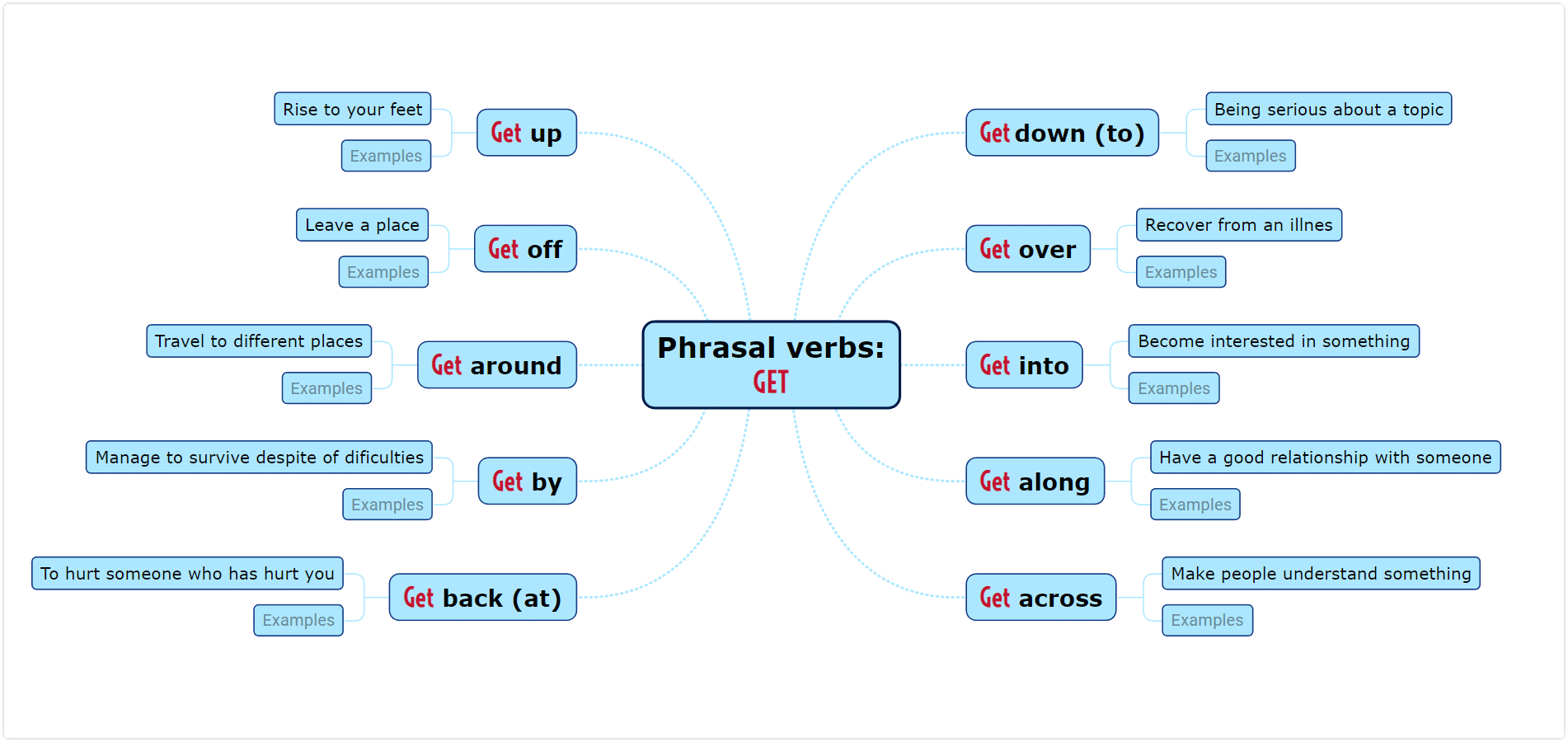
You can also use a mind map to identify common grammar mistakes. You can note incorrect tense use. Subject-verb problems. And more. By identifying these mistakes, you can then work on correcting them. You’ll be empowered to get more out of resources like grammar guides, dictionaries, and other online tools.
With practice, using mind mapping can help you to become more comfortable with grammar rules. This will ultimately help you as you seek to learn other foreign languages.
Keep it smart, simple, and creative!
The Mindomo Team





